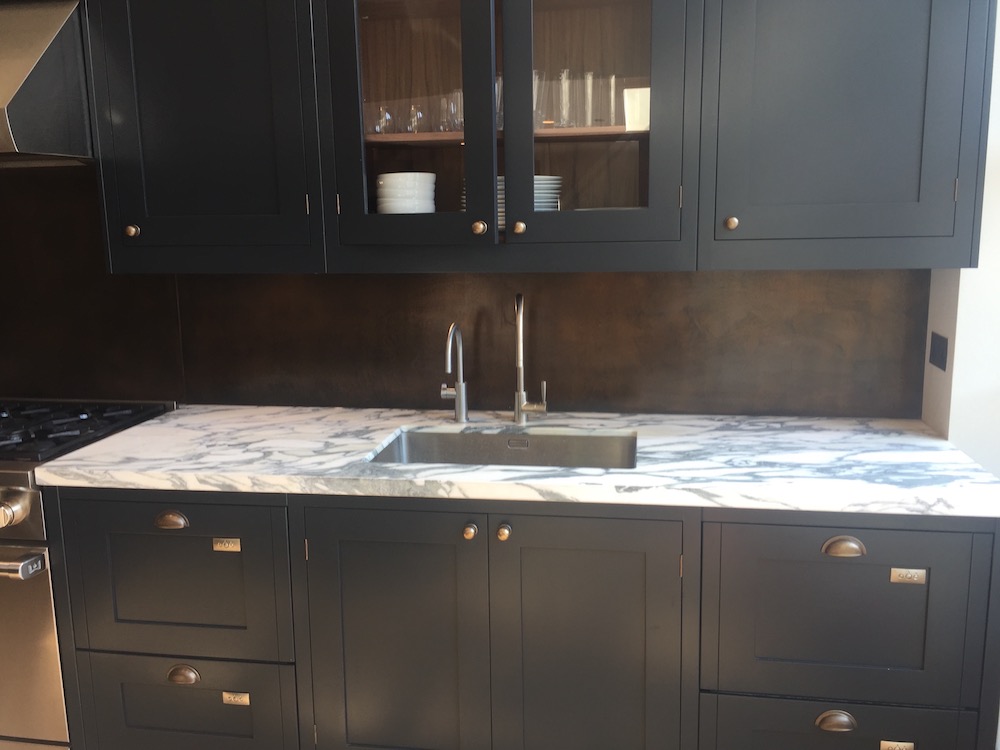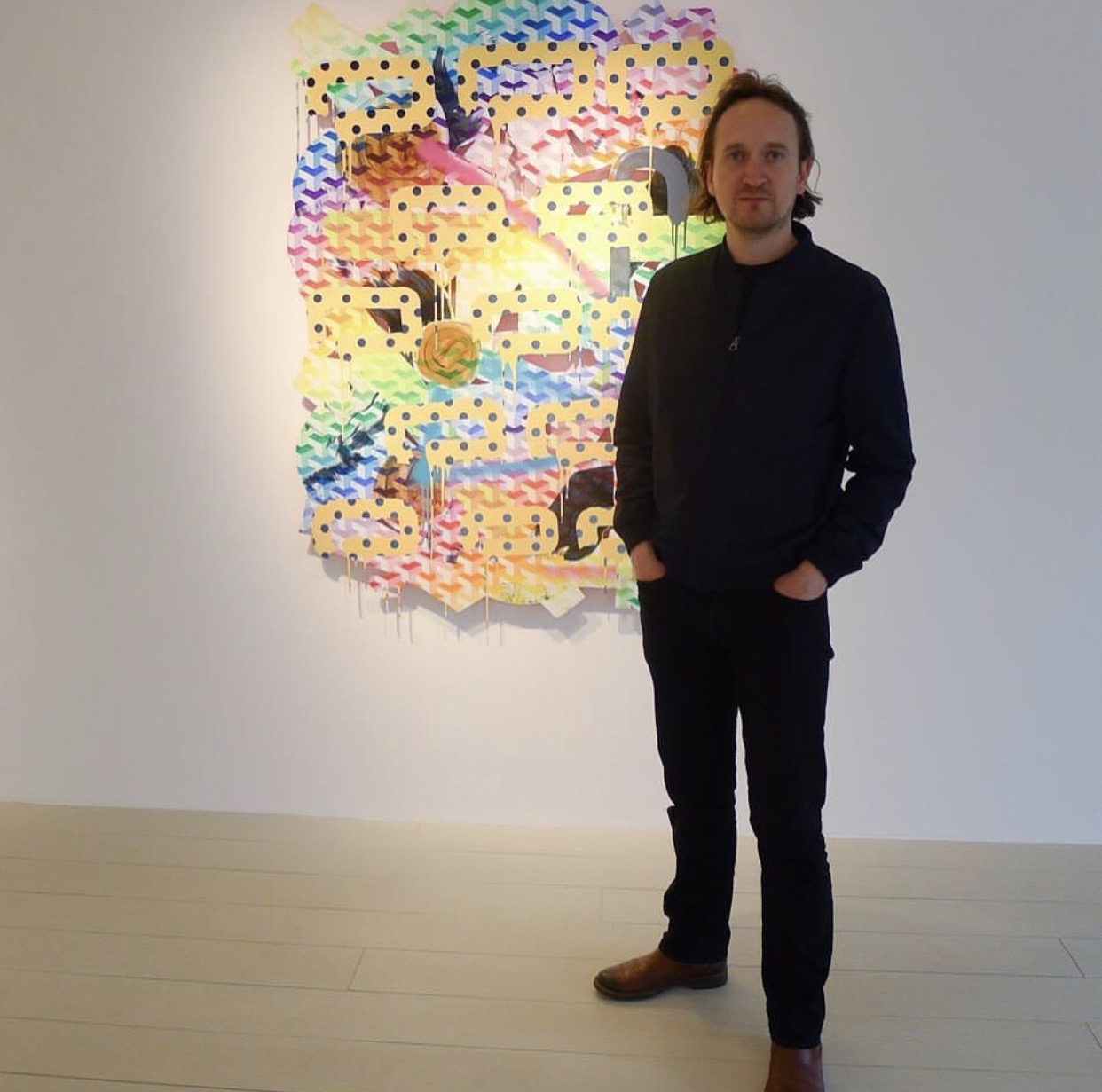
Strong new talent: Ralph Anderson Lucent Umbria Paintings
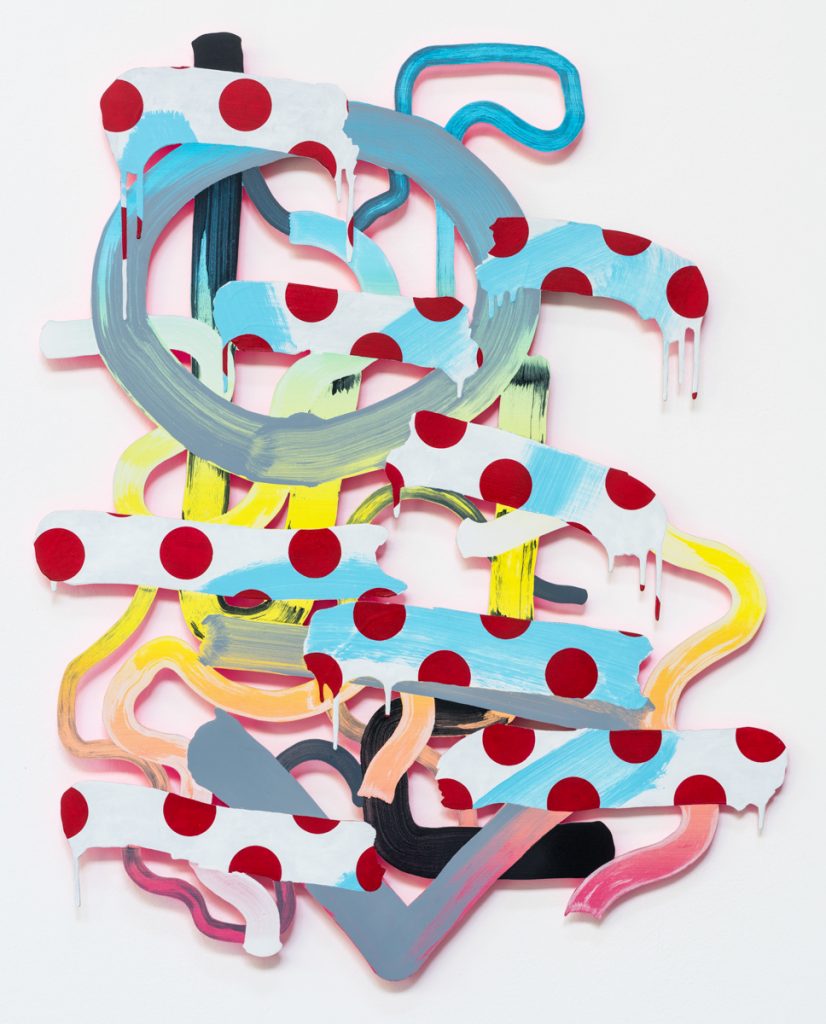
“On any journey through the city, signs dominate our peripheral vision. Advertising imperatives, disguised as maxims, loom out from billboards or the back end of busses; traffic signs line the streets; and screens bulge with junk mail. Everywhere we look, someone is telling us to do something. But underneath the arches or on the sides of abandoned carriages is the pop and glow of another urban language: tags and graffiti made by the cover of night. We glimpse these swirling, urgent and elicit marks in passing, unravelling the familiar greyscale order of the city, says Nico Kos Earle who reviews the exhibition for Almost Essential.
This dynamic lexicon of street art, full of individual gesture and vibrant colour, springs to mind on first encounter with the works of Ralph Anderson currently on show at JGM Gallery, in Battersea. “Ralph Anderson’s Lucent Umbra Paintings are strong, positive and stimulating, with a definite “WOW” factor to thrill the viewer. His work presents a marvellous spectacular for our first show by a contemporary British artist,” says gallery owner Jennifer Guerrini-Miraldi. Specialising in Aboriginal art, this show marks a dramatic departure for JGM Gallery, yet one that still presents work inspired by the environment in which it was made (just as Aboriginal art is very much rooted in the territory of its making).
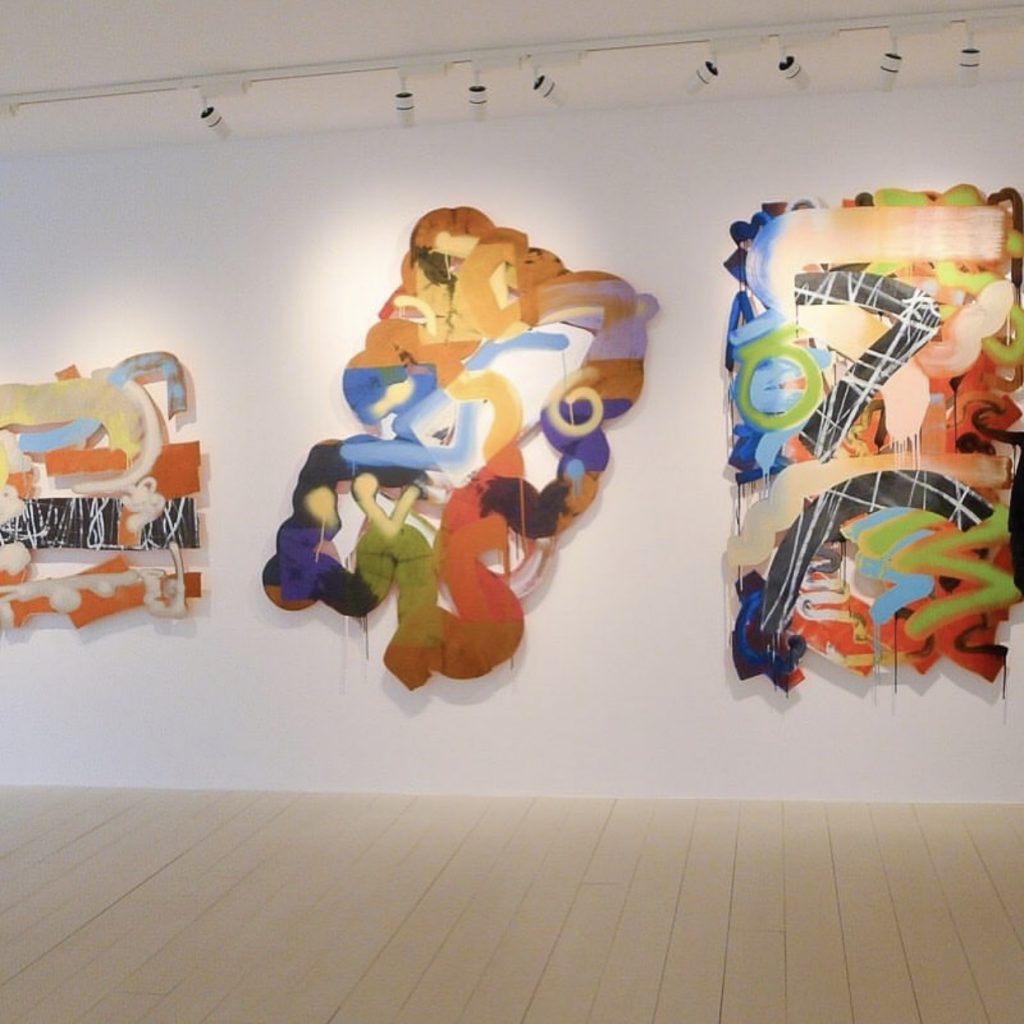
In this sense, Anderson’s process begins like a street photographer, with found image sources like snapshots from his route to and from work, visits to museums, and internet searches. Anderson then selects elements from these snapshots and blends them like composites using an intricate array of frozen brushstrokes, grids, zig-zags to create the frontal picture plane. These are frenetic marks made from a life lived in the city. “Like a traveller abroad, the over- abundance of visual sources and ciphers of this frontal picture plane, is set against a backdrop of strangeness and the unknown of a new place.” says Juan Bolivar in his essay ‘The Pragmatics of Anderson.’
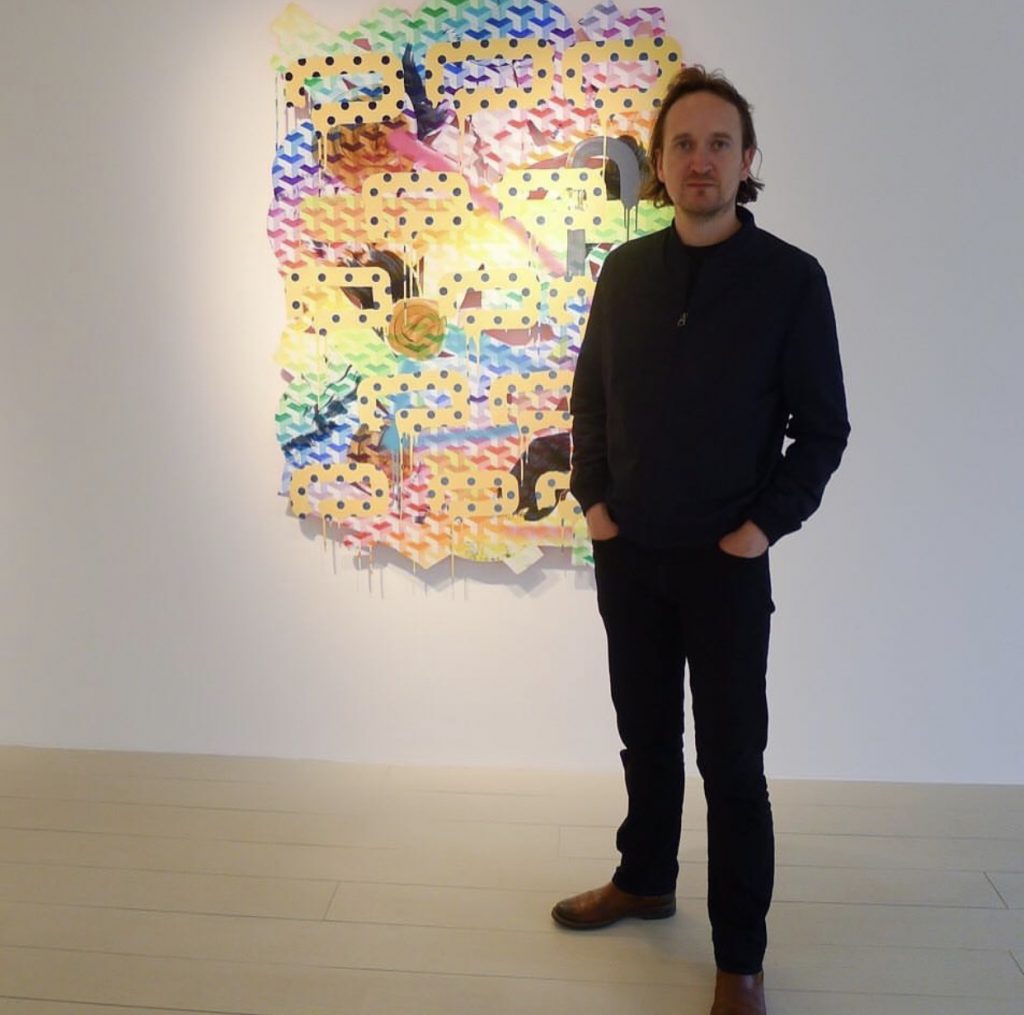
What Anderson does next has the effect of stopping time altogether: he cuts all the spaces out from between these swirling shapes, including the edges, to create a three dimensional object. He then back paints each one with fluorescent pigments. The resulting paintings are like floating reliefs that have been ripped out or stolen from the city scape, still glowing with the heat. As the the show’s title Lucent Umbra suggests, these works have an unnatural glow, one that comes from the peculiar clash between the history and the present found in London’s cityscape.
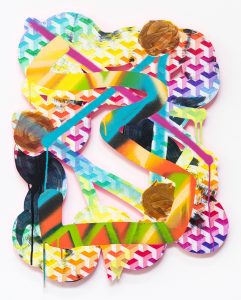
1323
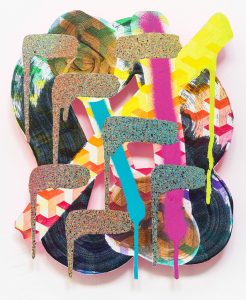
1318
Umbra (Latin for “shadow”) is the innermost and darkest part of a shadow, where the light source is completely blocked by the occluding body. An observer in the umbra experiences a total eclipse – which is what traditionally happens at the back of a painting. But as the history of painting has evolved from representation into abstraction, so too have the materials onto which artists paint (many of Anderson’s works are on aluminium) and how the painting is presented as an object. Contemporary artists like Finbar Ward and Scarlett Bowman deconstruct the canvas which becomes a three dimensional work in which all sides are relevant. Meaning “glowing” or “shining shadow,” the name Anderson gives to his new body of paintings refers to the technique he employs to give each work the illusion of a backlit glow and a coloured shadow.
The exhibition is centred around a large-scale three panel triptych, The Dog of Flanders, based on Rubens altarpiece Decent from the Cross. This triptych might have been cut from the side of a carriage, and whilst the inspiration is Biblical scene, apparently Anderson painted it whilst looking at the image on the screen of his phone. All references are deliberately lost, and the magical glow behind each monumental work asks an important question: where is the light coming from? These coloured shadows on the white gallery walls remind us that for many, art is what allows us to transcend the limits of our environment and experience the sublime.”
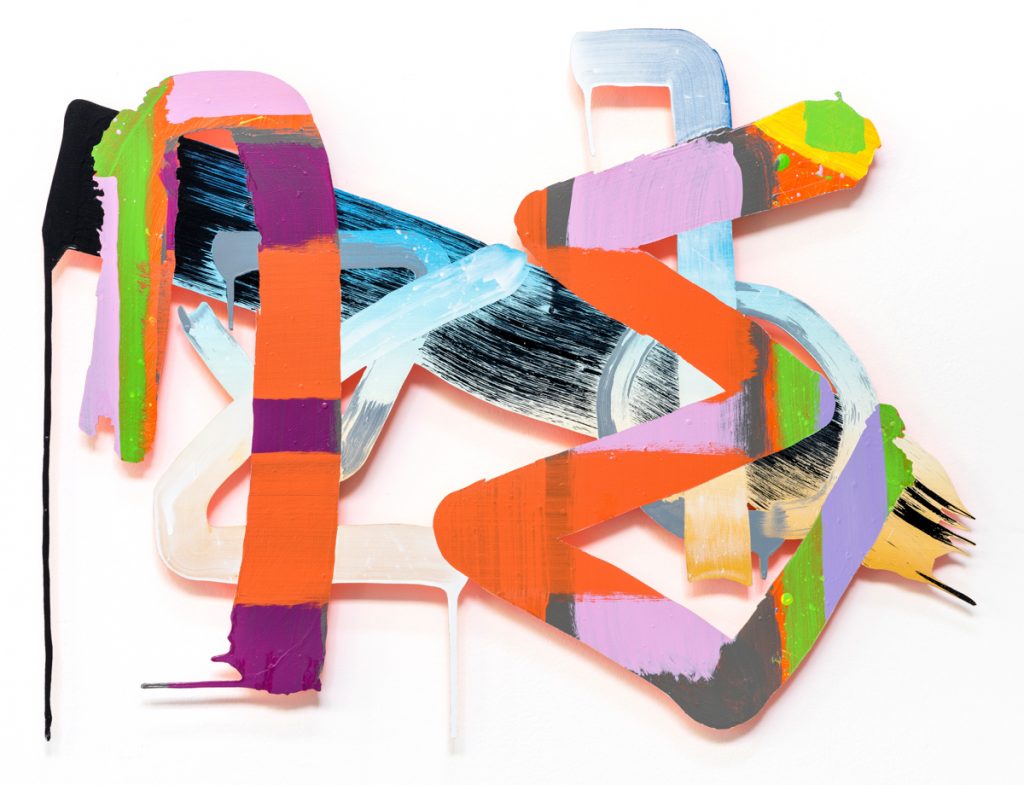
1325
by Nico Kos Earle- To contact Nico for Art Consulting contact her on Mobile: (+44) 7852 333134
Ralph Anderson will introduce us to his work with a talk on the 28th June 6.30-8.30pm at a Drinks reception at JGM Art Gallery. Come by for a Drinks and meet the Artist.
JGM ART GALLERY
24 Howie Street
SW11 4AY

